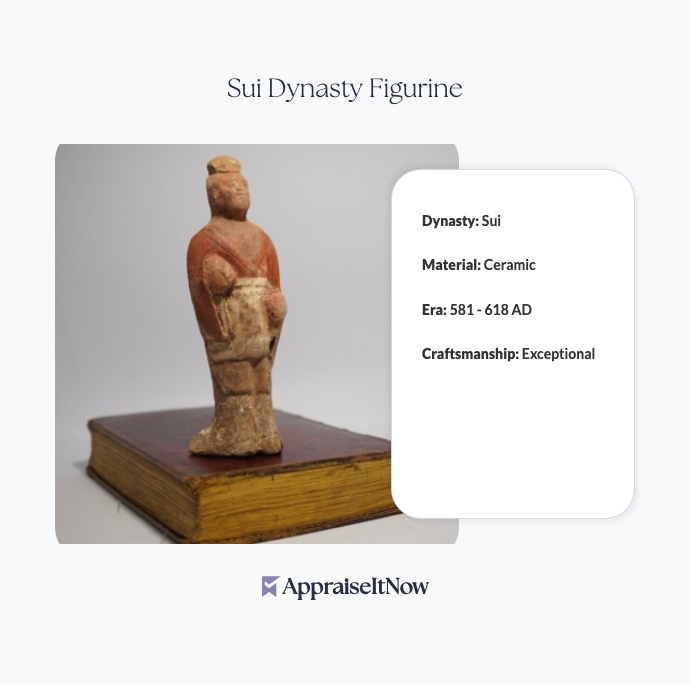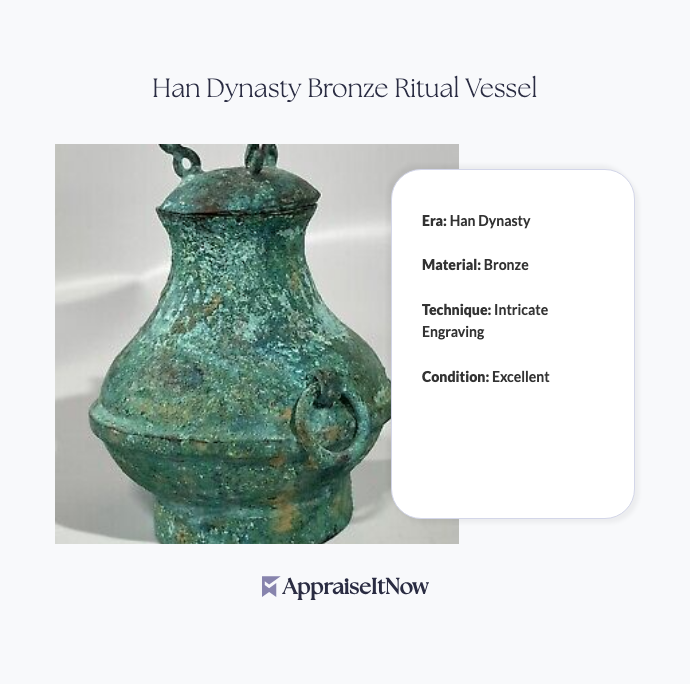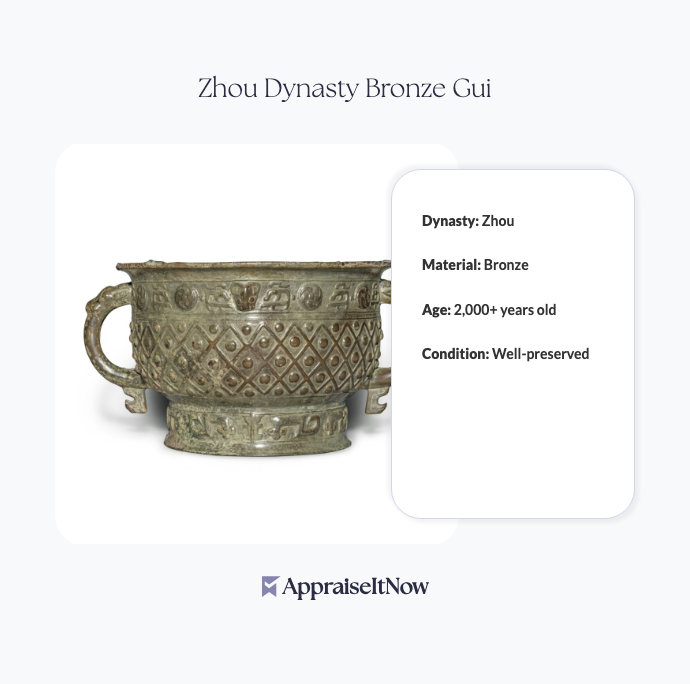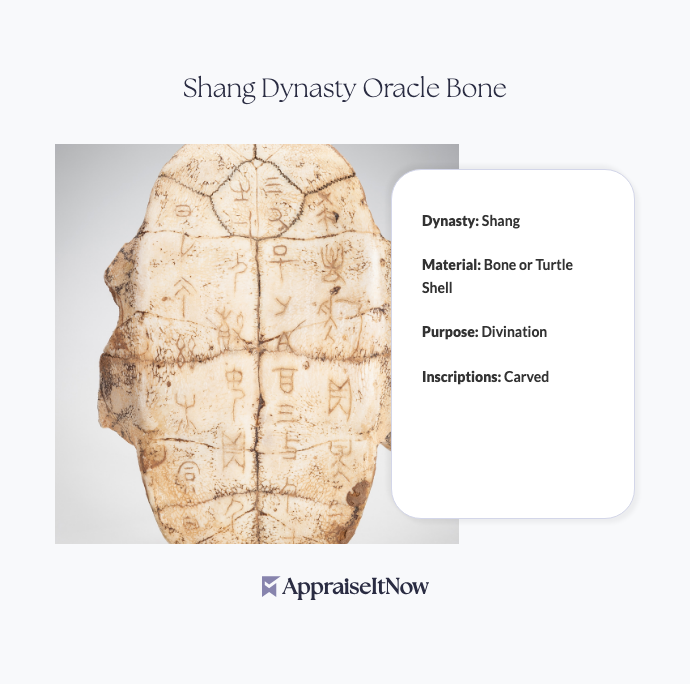<h1>How to Get Your Song Dynasty Celadon Bowl Appraised</h1>
<p>A Song Dynasty celadon bowl represents more than a decorative object—it's a tangible connection to centuries of Chinese artistic mastery. If you've inherited one, discovered it at an estate sale, or are considering acquisition, understanding how to properly appraise this investment ensures you make informed decisions about ownership, insurance, and potential sale.</p>
<h2>Understanding Your Song Dynasty Celadon Bowl's Value</h2>
<p>Song Dynasty celadon bowls typically command valuations between <strong>$30,000 and $40,000</strong> in today's collector market, though exceptional examples with superior provenance can exceed these estimates significantly. This substantial value reflects the extraordinary rarity and historical importance of pieces crafted between the 10th and 13th centuries during China's golden age of ceramic art.</p>
<p>What makes celadon so special? These jade-like vessels represent the pinnacle of Chinese pottery craftsmanship, valued for their soft glaze finish and technical perfection rather than decorative elaboration. The delicate floral carvings on the exterior of authentic Song Dynasty pieces showcase mastery that modern potters still struggle to replicate. Unlike flashier decorative ceramics, celadon's understated elegance has attracted serious collectors for over a thousand years.</p>
<div class="callout tip"><p><strong>Collector's Insight</strong></p>
<p>Song Dynasty celadon pieces are among the most sought-after ceramics globally, often outperforming other Chinese pottery at auction due to their historical significance and technical excellence.</p></div>
<h2>Key Characteristics That Define Authentic Song Dynasty Celadon</h2>
<p>Before seeking professional appraisal, familiarize yourself with the defining features of genuine Song Dynasty celadon. The bowl should exhibit a soft, jade-green glaze that appears almost luminescent under proper lighting—this distinctive hue distinguishes Song celadon from later reproductions or inferior wares. Authentic pieces feel smooth and refined when handled, with a glaze that seems to glow from within rather than sit on the surface.</p>
<p>How can you tell if celadon is an antique? Examining the bowl's base reveals critical authentication markers. Genuine Song Dynasty examples typically show irregular firing marks, kiln sand adhesion patterns, and signs of age that expert appraisers can date with reasonable accuracy. The quality of thrown pottery should feel balanced and precise, demonstrating the sophisticated techniques developed during centuries of refinement at kilns like those in Longquan.</p>
<p>The five great wares of China historically included celadon among its highest achievements, and Song Dynasty celadon specifically represents the pinnacle of this tradition. Understanding these distinctions helps you recognize whether your bowl justifies investment in professional <a href="/blog/appraisals-for-fine-porcelain-and-ceramics-valuing-delicate-artistry">appraisals for fine porcelain and ceramics</a>.</p>
<table class='appraisal-table'>
<thead>
<tr>
<th>Feature</th>
<th>Authentic Song Celadon</th>
<th>Later Reproductions</th>
</tr>
</thead>
<tbody>
<tr>
<td>Glaze appearance</td>
<td>Soft, jade-like luster</td>
<td>Uniform, glossy finish</td>
</tr>
<tr>
<td>Carving depth</td>
<td>Subtle, refined florals</td>
<td>Often overly elaborate</td>
</tr>
<tr>
<td>Base condition</td>
<td>Kiln marks, age patina</td>
<td>Too-clean appearance</td>
</tr>
<tr>
<td>Weight and feel</td>
<td>Precise, balanced form</td>
<td>Variable quality</td>
</tr>
</tbody>
</table>
<h2>How to Identify Your Song Dynasty Pottery</h2>
<p>If you're uncertain about what you own, several steps help establish whether your bowl qualifies as genuine Song Dynasty celadon. First, examine the form itself—Song bowls typically feature elegant simplicity with gently curved profiles. The diameter usually ranges between 4 and 8 inches, with proportions that feel harmonious rather than arbitrary.</p>
<p>The glaze color serves as a primary identifier. True celadon displays soft jade-green tones ranging from pale seafoam to deeper olive-green, depending on firing conditions and kiln chemistry. This distinctive coloration occurs through precise kiln atmosphere control, a technique Song potters perfected across generations. What color is true celadon? The answer varies slightly by kiln location—Longquan celadon differs subtly from northern kilns—but the hallmark remains that luminous jade-like quality.</p>
<p>Most valuable Chinese markings appear on the base, though Song Dynasty pieces rarely bear reign marks like later porcelain. Instead, authentic examples show natural aging patterns, firing scars, and kiln sand adhering to unglazed areas. Professional appraisers use magnification and specialized knowledge to date these features, distinguishing genuine Song ceramics from modern reproductions created through mass production or intentional fraud.</p>
<div class="callout note"><p><strong>Authentication Note</strong></p>
<p>Asking "Is my celadon valuable?" requires physical examination by qualified experts. Our <a href="/blog/appraising-asian-art-and-antiques-understanding-cultural-significance-and-value">appraisal resources for Asian art and antiques</a> explain how specialists validate authenticity before determining monetary value.</p></div>
<h2>Why Professional Appraisal Matters for Your Celadon Bowl</h2>
<p>Determining whether you possess an authentic Song Dynasty celadon bowl versus a later copy or reproduction demands expertise that extends beyond casual collecting knowledge. Professional appraisers bring credentialed experience with Asian ceramics, access to comparative databases, and understanding of authentication techniques including thermoluminescence testing for fired clay.</p>
<p>When seeking appraisal services, you're investing in several critical deliverables beyond simple valuation. A comprehensive report documents your bowl's condition, provenance history, physical characteristics, and market-based value estimate. This documentation becomes essential for insurance purposes, ensuring that if loss or damage occurs, your coverage reflects accurate replacement value. Estate planning also benefits from certified appraisals, providing executors and beneficiaries with documented asset values for distribution decisions.</p>
<p>The question of how much your Song Dynasty celadon bowl is worth ultimately requires professional analysis. While the $30,000-$40,000 range provides general market context, individual pieces may vary substantially based on condition, size, and provenance. A bowl with documented collection history or museum exhibition background commands significant premiums over undocumented examples.</p>
<h2>Factors That Influence Your Celadon Bowl's Appraisal Value</h2>
<p>Condition represents the primary value driver for antique ceramics. Does your bowl show cracks, chips, or repairs? Any damage significantly impacts appraisal figures, potentially reducing value by 30-50% or more depending on restoration quality. Appraisers carefully examine the bowl's interior and exterior surfaces, the base, and the rim for signs of firing cracks, old breaks with period repairs, and modern restoration attempts.</p>
<p>Provenance—the documented ownership history—substantially influences valuation. Bowls with clear collection trails, particularly those appearing in museum exhibitions or documented sales, command premiums over pieces with unclear histories. If your celadon bowl came from an established collector's estate, auction house record, or institutional collection, retain all documentation during the appraisal process.</p>
<p>Size and quality of carved decoration also affect value. Larger examples with refined, skillfully executed floral motifs outprice simpler pieces. The glaze quality—how evenly it covers the form, the depth of the jade-green coloration, and the absence of flaws—directly correlates with market value. Potters achieved remarkable consistency within Song Dynasty kilns, so exceptional uniformity distinguishes premium examples from standard production pieces.</p>
<h2>Understanding Regional Variations in Celadon Appraisals</h2>
<p>Different ceramic traditions developed across Song Dynasty China, and understanding these distinctions helps you appreciate your bowl's specific characteristics. Longquan kilns in Zhejiang Province produced the most celebrated celadon, with a distinctive jade-green glaze that collectors prize above all others. Northern kilns created alternative celadon styles with different glaze compositions and firing characteristics, typically valued somewhat lower than Longquan examples.</p>
<p>For collectors wondering what types of ceramics emerged in the Song Dynasty beyond celadon, the period also produced black-glazed wares, white porcelain, and other regional specialties. However, celadon's refined aesthetic and technical achievement positioned it as the era's most prestigious ceramic expression. This hierarchy remains reflected in modern market values, where authentic Song celadon commands premiums that other contemporary wares rarely achieve.</p>
<p>Seeking qualified appraisers familiar with Asian ceramics proves essential for accurate regional attribution. Our network includes specialists with deep <a href="/blog/unveiling-the-world-of-asian-antiques-appraising-chinese-japanese-and-southeast-asian-art">expertise in appraising Asian art and antiques</a>, who understand the nuanced differences between kiln sources and production periods.</p>
<div class="callout tip"><p><strong>Regional Insight</strong></p>
<p>Longquan celadon typically values 15-25% higher than northern kiln examples of comparable condition and size, reflecting market preference for historically documented superior quality.</p></div>
<h2>Insurance and Documentation Requirements</h2>
<p>Once you obtain a professional appraisal, use the certified report to establish appropriate insurance coverage. Standard homeowner's policies often inadequately cover high-value ceramics, so specialized fine art or collectibles insurance becomes necessary. Your appraiser's detailed report, including photographs from multiple angles and condition documentation, provides the evidence your insurance carrier needs to calculate accurate premiums and coverage limits.</p>
<p>Documentation should accompany your bowl in perpetuity. Maintain copies of the appraisal report, any auction house catalogs if applicable, photographs, and conservation records. If you ever need to sell, this comprehensive file dramatically enhances buyer confidence and justifies your asking price. Professional appraisers understand this documentation imperative and structure reports accordingly.</p>
<p>Should you pursue acquisition of a Song Dynasty celadon bowl, request appraisal documentation before completing purchase. This protects you against misidentified reproductions and ensures the seller's claims about authenticity align with expert assessment. Understanding <a href="/blog/evaluating-the-cultural-significance-of-art-appraisals-beyond-monetary-value">how to properly evaluate cultural significance in art appraisals</a> ensures you appreciate both the monetary and historical dimensions of your potential investment.</p>
<h2>Finding Qualified Celadon Appraisers</h2>
<p>Not all appraisers possess expertise in Asian ceramics. When seeking professional valuation, prioritize specialists with credentials including membership in professional organizations like AAA, ISA, ASA, or CAGA. These designations indicate commitment to continuing education and adherence to professional standards including USPAP compliance.</p>
<p>Ask potential appraisers about their specific experience with Song Dynasty ceramics and celadon authentication. Request references from previous clients and inquire about their familiarity with comparative market data for similar pieces. Qualified specialists can explain their methodology for dating, authentication, and valuation in clear language you understand.</p>
<p>AppraiseItNow connects you with vetted appraisers across the country who specialize in <a href="/blog/understanding-artwork-appraisals">fine artwork appraisals</a> and Asian art valuations. Our platform enables secure photograph submission, detailed item descriptions, and expert assessment without requiring you to transport valuable pieces or meet specialists in person—particularly valuable when protecting irreplaceable ceramics from handling risk.</p>
<h2>The Path Forward for Your Song Dynasty Celadon Bowl</h2>
<p>Your Song Dynasty celadon bowl represents a significant financial asset deserving professional expertise and careful documentation. Whether you're securing insurance coverage, planning an estate, evaluating a potential purchase, or simply satisfying curiosity about what you own, certified appraisal provides the authoritative foundation for all subsequent decisions.</p>
<p>The process begins simply—gather your bowl, photograph it clearly, and describe any history you know. Professional appraisers take this information and combine it with market expertise, authentication knowledge, and documentation skills to deliver a comprehensive valuation report. This investment in professional appraisal returns multiplied value through confidence, accurate documentation, and protection of your ceramic treasure.</p>
<div class="callout note"><p><strong>Key Takeaway</strong></p>
<p>A certified appraisal of your Song Dynasty celadon bowl provides authoritative valuation, authentication verification, and documentation essential for insurance, estate planning, or sale. Professional expertise ensures you understand both the historical significance and accurate market value of this remarkable example of classical Chinese ceramic mastery.</p></div>







.avif)







